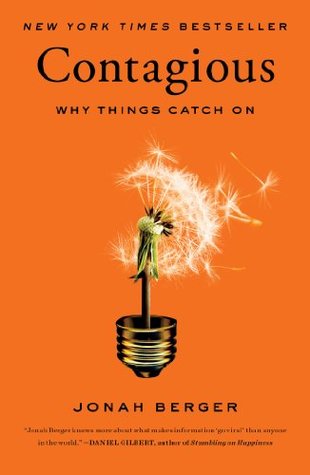More on this book
Community
Kindle Notes & Highlights
Wein didn’t create just another cheesesteak, he created a conversation piece.
So when something comes along that offers better functionality or does a better job, people tend to switch to it.
But although quality, price, and advertising contribute to products and ideas being successful, they don’t explain the whole story.
When trying to explain why Olivia became a more popular name than Rosalie, familiar explanations like quality, price, and advertising get stuck. It’s not like one name is really “better” than the other, and both names are free, so there is no difference in price. There is also no advertising campaign to try to get everyone to name their kids Olivia, no company determined to make that name the hottest thing since Pokémon.
But word of mouth is not just frequent, it’s also important.
word of mouth from everyday Joes and Janes is at least ten times more effective.
Word of mouth, on the other hand, is naturally directed toward an interested audience.
Word of mouth tends to reach people who are actually interested in the thing being discussed. No wonder customers referred by their friends spend more, shop faster, and are more profitable overall.
Research by the Keller Fay Group finds that only 7 percent of word of mouth happens online.
In The Tipping Point, for example, Malcolm Gladwell argues that social epidemics are driven “by the efforts of a handful of exceptional people” whom he calls mavens, connectors, and salesmen.
person sharing the joke isn’t all that funny. Contagious content is like that—so inherently viral that it spreads regardless of who is doing the talking.
STUDYING SOCIAL INFLUENCE My path to studying social epidemics was anything but direct.
Principle 1: Social Currency
Principle 2: Triggers
We need to design products and ideas that are frequently triggered by the environment and create new triggers by linking our products and ideas to prevalent cues in that environment. Top of mind leads to tip of tongue.
Principle 3: Emotion
Principle 4: Public
Principle 5: Practical Value
Principle 6: Stories
So talking about what you did this weekend might feel just as good as taking a delicious bite of double chocolate cake.
One way to generate surprise is by breaking a pattern people have come to expect.
So what transformed what could have been a ho-hum website into one people were clamoring to get access to? How come Rue La La was so much more successful? Because it made people feel like insiders.
Scarcity and exclusivity boost word of mouth by making people feel like insiders.
But it wasn’t. More than ten thousand more people voted in favor of the school funding initiative when the polling place was a school. Polling location had a dramatic impact on voting behavior.
Researchers call this strategy the poison parasite because it slyly injects “poison” (your message) into a rival’s message
Triggers work the same way. The color red, for example, is associated with many things: roses, love, Coca-Cola, and fast cars, to name just a few.
showing fat pouring out of a can, the DOH also nicely leveraged triggers.
Awe expands one’s frame of reference and drives self-transcendence.
Awe is a complex emotion and frequently involves a sense of surprise, unexpectedness, or mystery. Indeed, as Albert Einstein himself noted, “The most beautiful emotion we can experience is the mysterious.
Our intuition was right: awe boosted sharing. Awe-inspiring articles were 30 percent more likely to make the Most E-Mailed list.
Sharing emotions also helps us connect.
Emotion sharing is thus a bit like social glue, maintaining and strengthening
Sadder articles were actually 16 percent less likely to make the Most E-Mailed list.
The answer was definitive: positive articles were more likely to be highly shared than negative ones.
Articles that evoked anger or anxiety were more likely to make the Most E-Mailed list.
Arousal is a state of activation and readiness for action.
Other emotions, however, have the opposite effect: they stifle action. Take sadness.
we had found that awe increased sharing and that sadness decreased it.
Understanding arousal helps integrate the different results we had found so far. Anger and anxiety lead people to share because, like awe, they are high-arousal emotions.
Arousal is also one reason funny things get shared.
Observability has a huge impact on whether products and ideas catch on.
If people can’t see what others are choosing and doing, they can’t imitate them.
People share practically valuable information to help others. Whether by saving a friend time or ensuring a colleague saves a couple of bucks next time he goes to the supermarket, useful information helps.
One of the main tenets of prospect theory is that people don’t evaluate things in absolute terms. They evaluate them relative to a comparison standard, or “reference point.”
Deals seem more appealing when they highlight incredible value.
A deal needs to cut through the clutter to get shared.
people don’t think in terms of information. They think in terms of narratives.
Narratives are inherently more engrossing than basic facts. They have a beginning, middle, and end. If people get sucked in early, they’ll stay for the conclusion.
makes them look cool and in the know. Other stories are driven by (high arousal) Emotion.
Stories carry things. A lesson or moral. Information or a take-home message.


